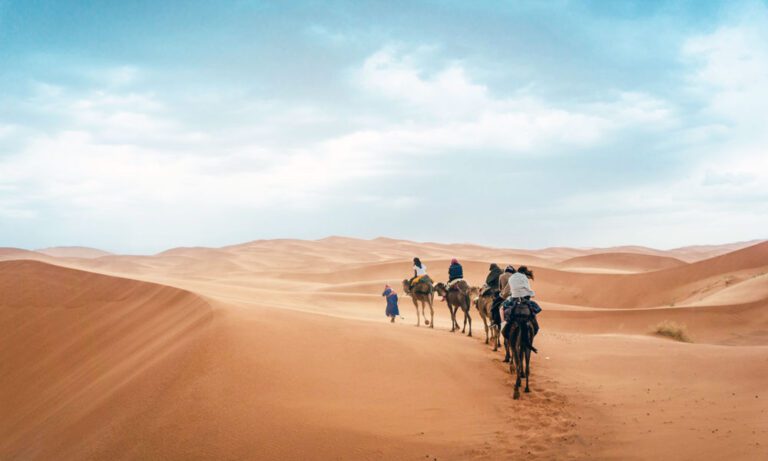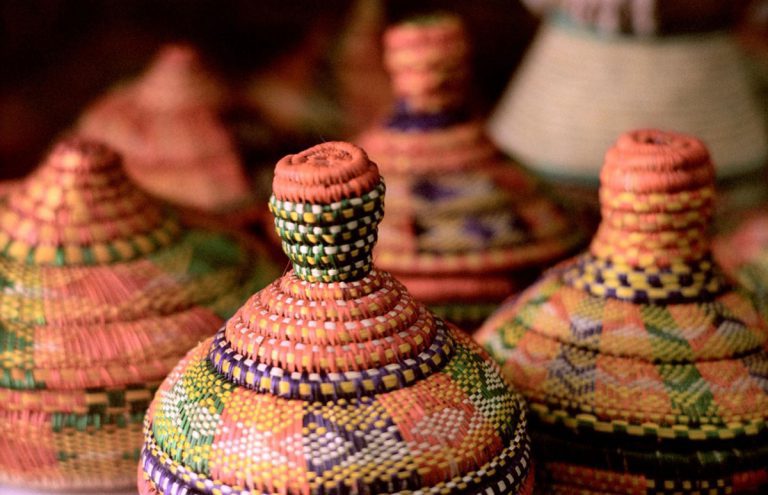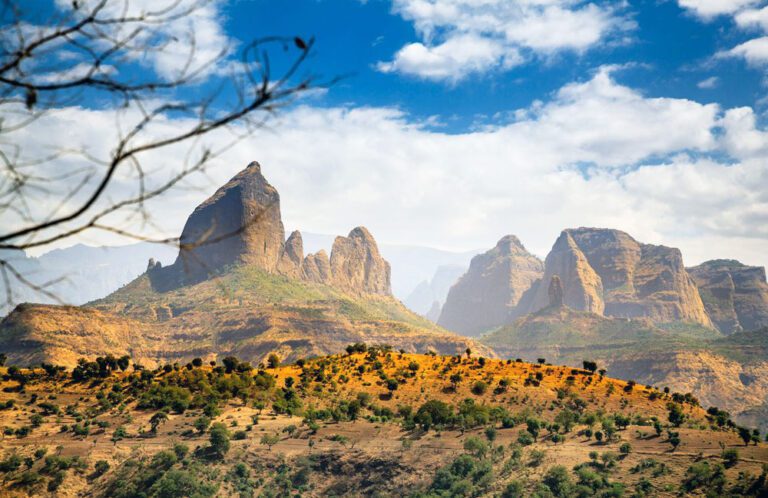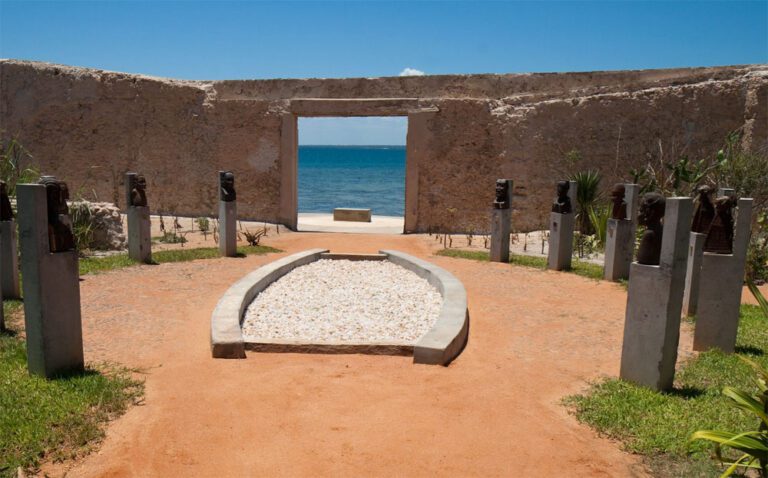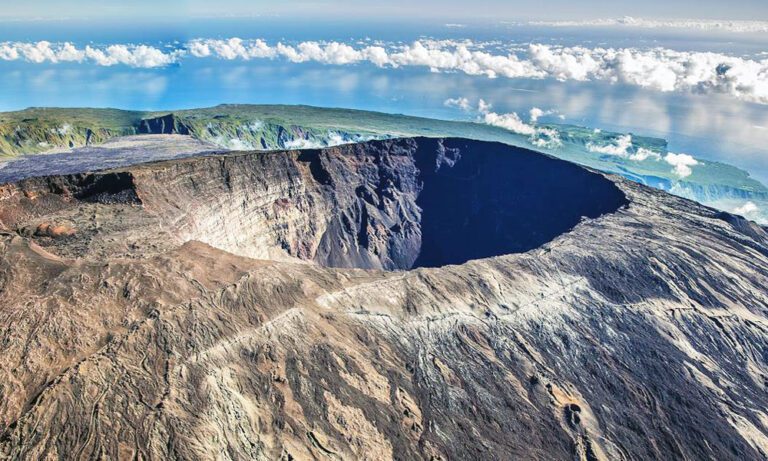The Top National Parks in Ghana: A Guide to the Country’s Best Wildlife Sanctuaries
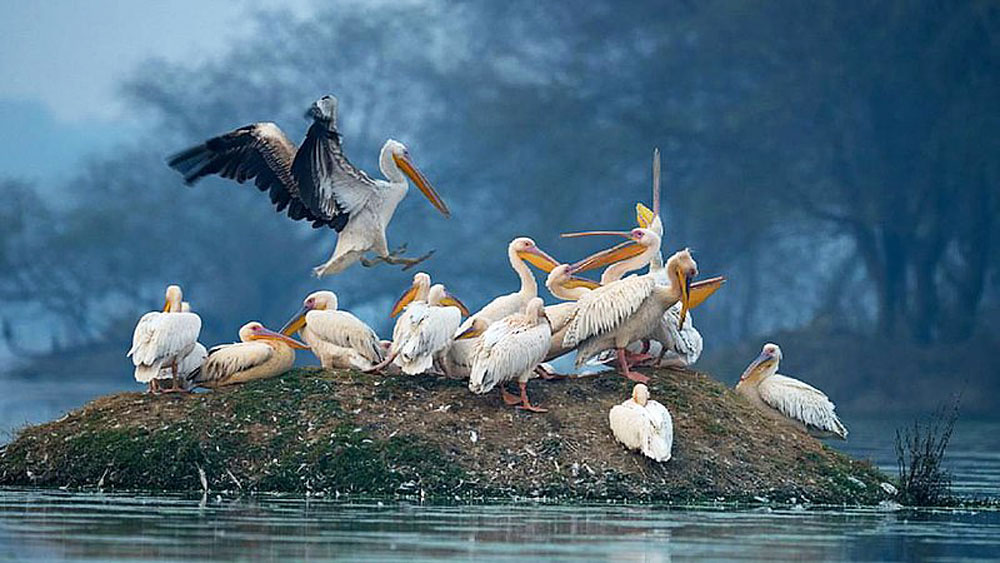
If you’re looking for an adventure in Ghana, exploring the country’s national parks is a great place to start. Ghana is home to seven national parks, each offering unique landscapes and wildlife. From the savannahs of Mole National Park to the rainforests of Kakum National Park, there’s something for everyone.
Mole National Park is the largest and oldest national park in Ghana, spanning over 4,800 square kilometers. It’s a popular destination for wildlife enthusiasts, as it’s home to elephants, antelopes, baboons, and more. If you’re lucky, you may even spot a leopard or hyena. The park also offers safari tours, giving you a chance to see these animals up close in their natural habitat.
Another must-visit national park in Ghana is Kakum National Park. Known for its canopy walkway, this park is a great destination for nature lovers. The walkway is suspended 30 meters above the forest floor, offering a unique perspective of the rainforest and its inhabitants. The park is also home to over 40 species of mammals, including forest elephants and primates.
Each park has its unique features, making them worth exploring. Here is a brief overview of Ghana’s national parks:
1. Kakum National Park
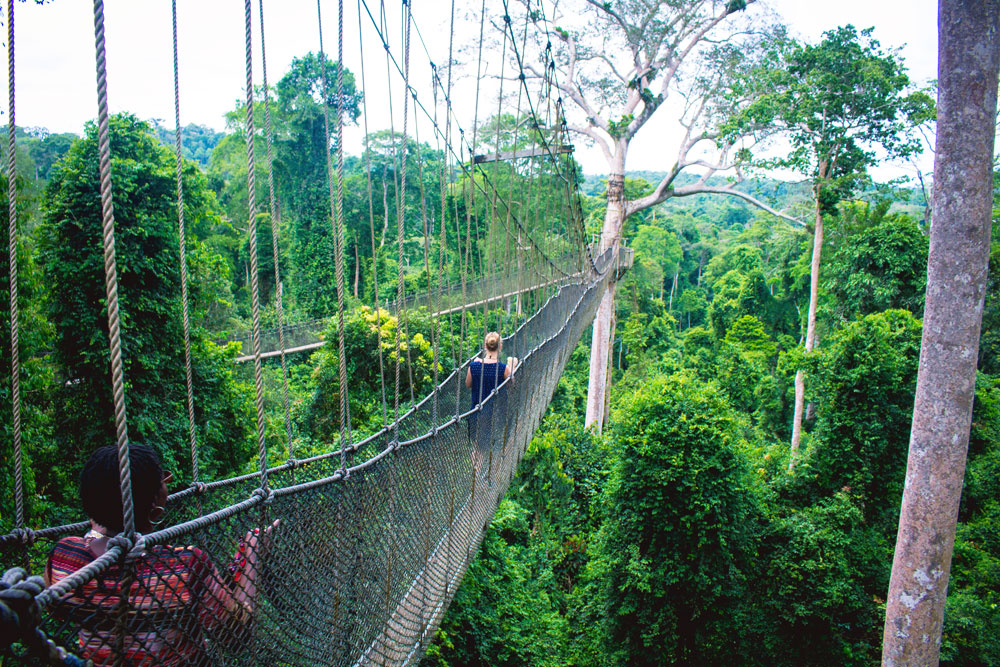
Among the national parks of Ghana, Kakum National Park shines as a crown jewel. Located in the heart of the Central Region, this national park in Ghana is a striking example of conservation efforts made to preserve the tropical rainforest. Established in 1992, it stands as a haven for over 500 types of butterflies, 235 bird species, and numerous endangered mammal species, including the Diana monkey and the yellow-backed duiker.
One of the park’s highlights is its renowned canopy walkway. At a breathtaking height, it offers visitors an exhilarating bird’s eye view of the rainforest canopy. This immersive experience is unparalleled in West Africa, allowing guests to come face-to-face with the rich flora and fauna of the protected area.
West Africa’s biodiversity extends beyond just mammals. Bird lovers will be thrilled by the white-breasted and colobus monkeys. They will also find the tall trees of Kakum a sanctuary for bird species such as the forest elephant and 344 other species of birds. Kakum also houses the tallest tree in the whole of West Africa, named Dzebobo.
2. Mole National Park
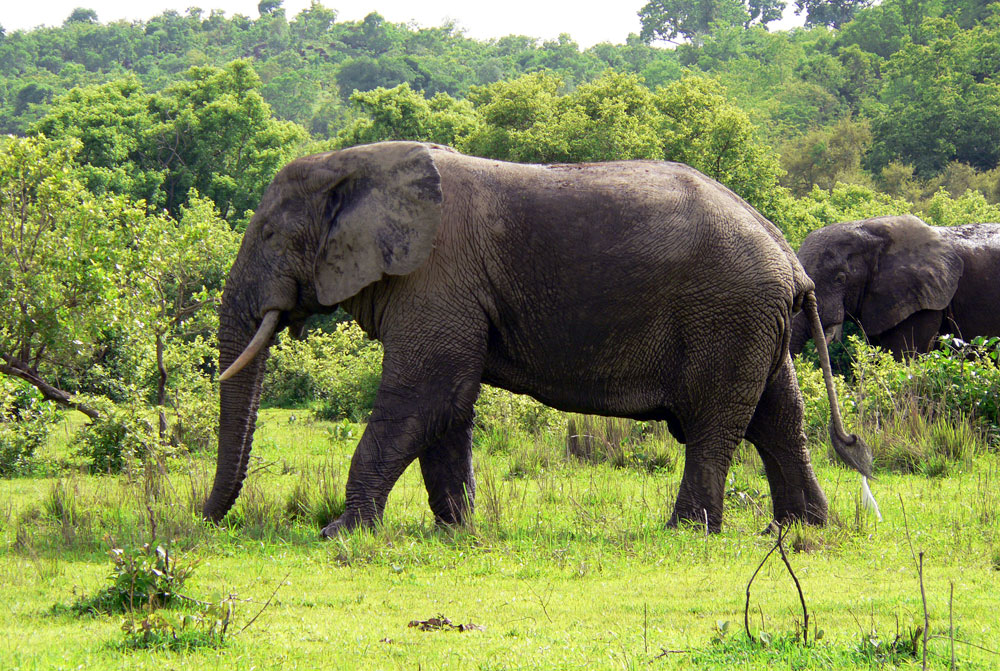
Nestled in Ghana’s Savannah region, Mole National Park is a beacon of West Africa’s wildlife diversity. As Ghana’s largest national park, Mole stretches over an impressive 1867 square miles (4,840 square km) and is home to an array of flora and fauna. Within this captivating landscape, visitors can embark on unforgettable safari experiences, with more than 90 mammal species to spot, including elephants, antelopes, and warthogs.
The park’s unique ecosystem includes both savanna and riparian environments, providing habitats for an impressive variety of birds. From the iconic African elephant to the nimble duiker, these grasslands and woodlands teem with life, underscoring the park’s status as one of the top national parks in Ghana.
But Mole isn’t just about mammals. Its avian population is equally fascinating, with 344 bird species offering an absolute treat for birdwatchers. Mole is also a haven for butterfly species, adding vibrant dashes of color to the park’s enchanting tapestry of life.
Situated in Ghana’s northwest, it’s easily accessible from Tamale Airport. Mole National Park serves as an emblem of Ghana’s commitment to conservation, being one of the 21 protected areas in the country.
This is a must-visit destination for any wildlife enthusiast, providing a first-hand glimpse into the thrilling biodiversity of West Africa’s national parks. From the rustling canopy of trees to the stirring sight of elephants, Mole National Park is an unmissable stop in your Ghanaian adventure.
3. Bui National Park
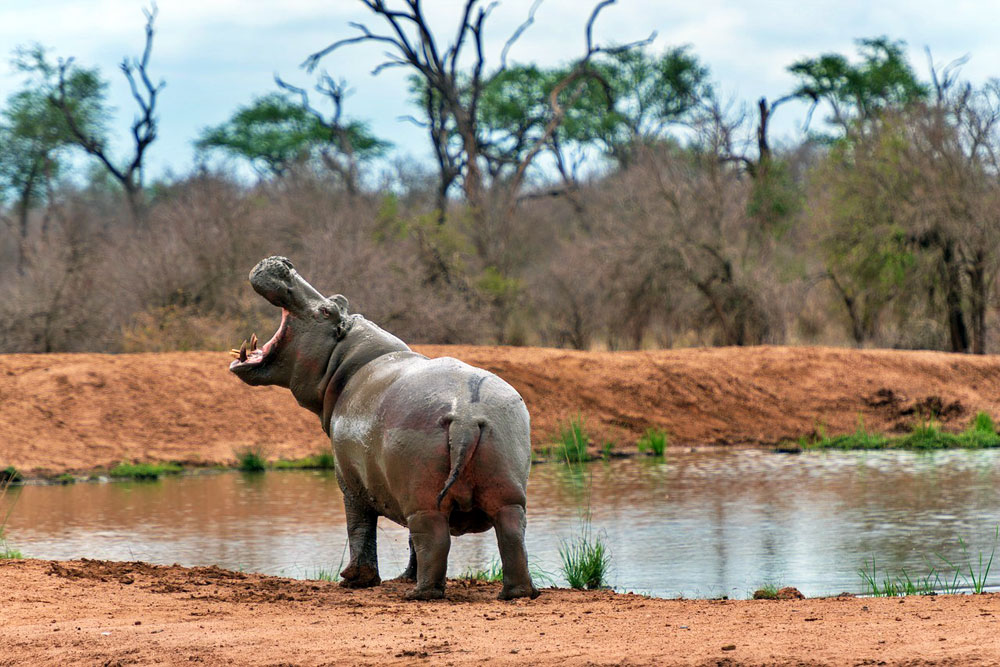
Nestled in the Brong-Ahafo Region, Bui National Park is a gem among Ghana’s national parks. Established in the 1970s, the park is a notable conservation area in West Africa, boasting a diverse array of wildlife, including the endangered hippopotamus and roan antelope.
Bui is uniquely positioned along the winding Black Volta River, providing a riparian environment that supports a myriad of mammals. This national park in Ghana is home to a healthy elephant population and other species like buffalo, warthogs, and even the elusive leopard.
The park’s landscape is a combination of savanna and forest reserve, offering both open vistas and canopy-covered trails. Hiking routes meander through tropical rainforests, offering glimpses of Ghana’s diverse flora and several bird species. Bird watchers will be delighted to know that the park houses about 235 species of birds.
The park also boasts an impressive man-made feature, the Bui Dam. This hydroelectric dam is not only a significant power project but also a spectacular sight to behold.
Being one of the top national parks in Ghana, Bui provides a robust safari experience. The wildlife viewing here is complemented by the stunning backdrop of the park’s impressive waterfalls, providing a feast for both the eyes and the spirit.
Bui National Park, just one of the 7 national parks and 21 protected areas across Ghana demonstrates the country’s commitment to conservation.
4. Kyabobo National Park
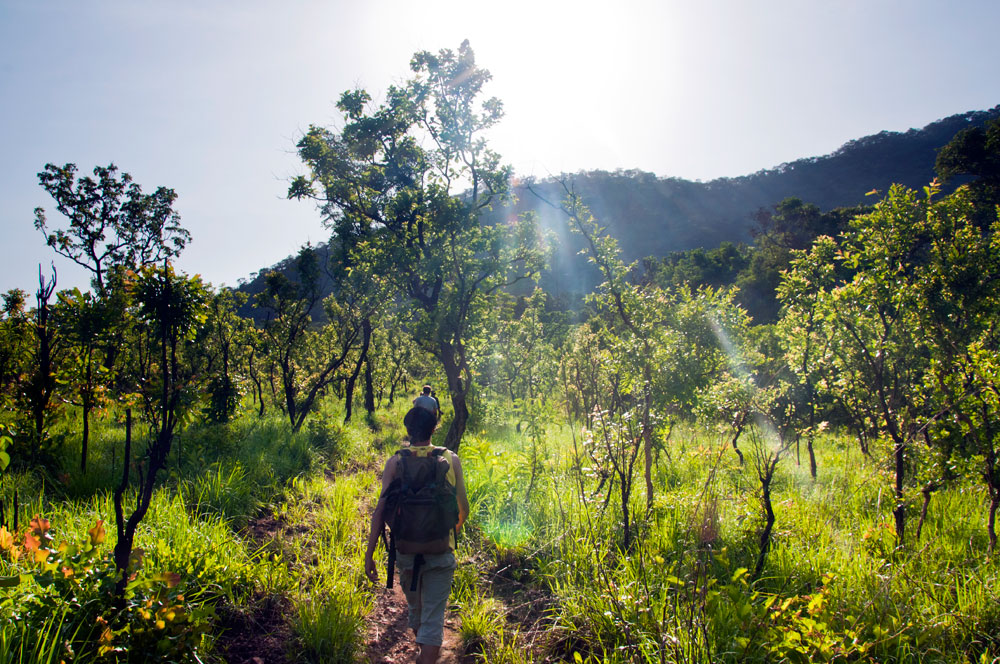
Situated in the Volta Region of Ghana, Kyabobo National Park is a radiant gem among Ghana’s 7 national parks. This national park in Ghana boasts a variety of endemic species, such as the Kyabobo golden frog and the Kyabobo grasshopper. The park, nestled against the border with Togo, is a vibrant testament to the biodiverse wealth of West Africa’s rainforests.
Kyabobo is a haven for wildlife, a protected area that is home to an array of mammals, including elephants, buffalo, and the warthog. As one of the top national parks in Ghana, the park also houses an abundance of bird species, boasting around 235 different species. It’s an ideal place for wildlife viewing and offers an immersive safari experience.
Apart from its rich fauna, the park’s flora is equally mesmerizing, especially the rainforest canopy, which is home to some of the tallest trees in Ghana. Among the trails winding their way through this lush vegetation, hikers may encounter primates like the endangered Diana monkey or the colobus monkey. The paths also offer the chance to appreciate the park’s diverse butterfly species, fluttering amidst the tropical rainforest.
From the savanna to the riparian zones along the Black Volta River, Kyabobo National Park truly epitomizes Ghana’s conservation efforts. So whether you are a flora enthusiast, an avid bird watcher, or a hiker, Kyabobo offers an unforgettable journey through the wonders of West Africa’s biosphere.
5. Digya National Park
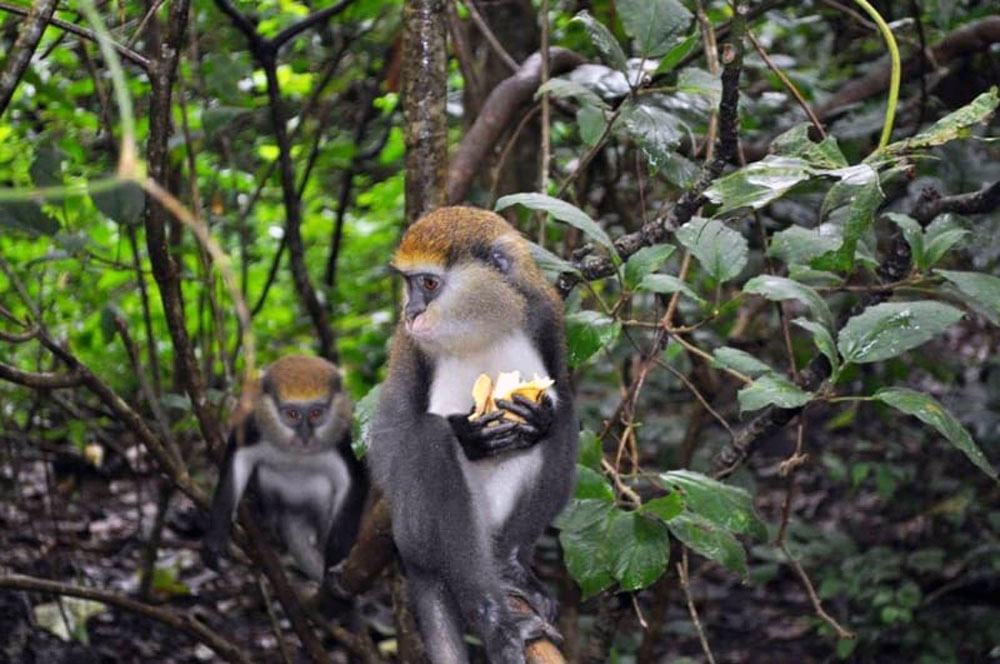
Sprawling across the Brong-Ahafo Region of Ghana, Digya National Park is a must-visit among the top national parks in the country. As one of the 7 national parks in Ghana, this impressive protected area showcases the nation’s dedication to conservation efforts.
The park’s tropical rainforest canopy is a birder’s paradise, offering refuge to an astonishing 236 species of birds. Enthusiasts will be delighted to encounter species like the African grey parrot and the yellow-billed kite. But birds aren’t the only treasures here – Digya also teems with a rich variety of mammals. Keep an eye out for forest elephants, buffalo, antelope, and warthogs while on a safari.
Situated by the Black Volta River that winds its way through West Africa’s landscape, Digya is also home to a significant population of the endangered African elephant. Wildlife viewing from the riverbank, you may also spot the occasional hippopotamus. For primate lovers, the park houses the playful Diana monkey and the white-breasted colobus monkey, both offering memorable sightings.
While the park doesn’t have a canopy walkway like its counterpart, Kakum, it compensates with beautiful hiking routes, allowing explorers to admire the park’s flora, including some of Ghana’s tallest trees. In its unique biosphere reserve, you’ll find endemic butterfly species fluttering amidst a thriving ecosystem.
Located near Tamale Airport, Digya National Park is a veritable treasure trove, truly embodying the spirit of Ghana’s commitment to wildlife conservation. Whether you’re an avid birdwatcher, a mammal enthusiast, or simply a lover of nature, a visit to Digya will leave you enchanted and full of respect for West Africa’s captivating biodiversity.
6. Bia National Park

Set within the lush confines of the Western Region of Ghana, Bia National Park is an exquisite display of nature’s bounty. Established as one of Ghana’s first protected areas, this national park in Ghana is a paradise for nature lovers. Known for its towering trees and rich flora, the park is a prime example of West Africa’s tropical rainforest, playing a pivotal role in the conservation of the region’s unique ecosystem.
A safari through the park offers a fascinating wildlife-viewing experience. The park is home to diverse mammal species, including the forest elephant, buffalo, leopard, and the playful warthog. Bird enthusiasts can indulge in the spotting of over 235 bird species, including the white-breasted guinea fowl and the charismatic colobus monkey.
The park’s canopy walkway presents a thrilling exploration opportunity as it winds its way through the tallest trees in the rainforest. From here, you might spot the elusive chimpanzee or the strikingly colored butterfly species flitting through the undergrowth. Bia is also home to other endangered species like the duiker, making it an important refuge in the preservation of West Africa’s unique biodiversity.
Indeed, Ghana’s national parks, each with its own distinct character and charm, make up 7 stunning gems in the country’s portfolio of 21 protected areas, all striving to conserve the precious flora and fauna of this vibrant region. Whether you’re a primate enthusiast, a bird watcher, or a tree lover, you’re sure to find your slice of paradise here in Bia National Park.
7. Nini Suhien National Park
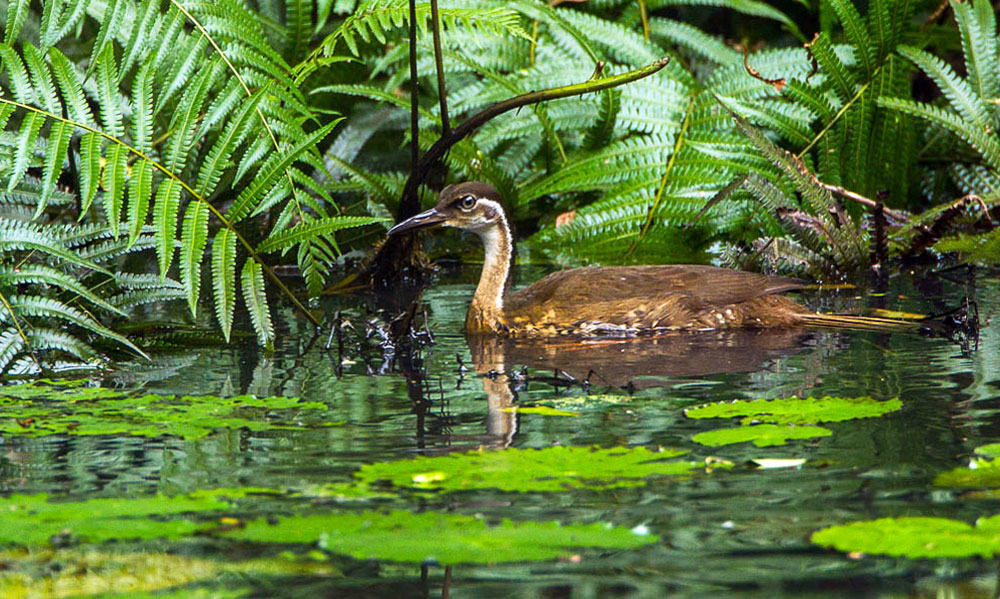
In the heart of Ghana’s Western Region lies the gem of Nini Suhien National Park. This park, one of the top national parks in Ghana, is renowned for its chimpanzee sanctuary and stands out among the 7 national parks of Ghana. As a protected area, it provides a haven for over 700 chimpanzees, offering visitors the unique opportunity to observe these endangered primates up close.
But the park’s richness goes beyond its primate population. Nini Suhien is also home to a diverse range of mammal species, including elephants, leopards, and antelopes, which visitors can experience during an exhilarating safari tour. The park’s forest reserve is a paradise for bird enthusiasts, housing an impressive 235 species of birds. For butterfly lovers, the park doesn’t disappoint, boasting over 500 species of butterflies.
In addition to being a conservation area, Nini Suhien National Park is a wonderful representation of the tropical rainforest ecosystem, complete with a lush canopy that shades the forest floor. It offers an enchanting hiking route that winds its way through the park, perfect for adventurers seeking to explore the park’s unique flora and fauna.
This national park in Ghana demonstrates the country’s commitment to conserving endangered species and ecosystems, making it an unmissable part of any wildlife enthusiast’s journey through West Africa. In a country known for its biodiversity, Nini Suhien National Park holds a unique spot, a testament to Ghana’s concerted conservation efforts.
Conclusion
In conclusion, Ghana’s national parks offer a unique and diverse range of ecosystems and wildlife. So, whether you’re seeking an unforgettable safari experience, are eager to explore the savanna or a butterfly enthusiast, the national parks in Ghana offer something for every wildlife and nature lover.
There is no doubt that these 21 protected areas in Ghana are crucial habitats for a diverse range of species, and stand as testimony to the conservation efforts of West Africa.

